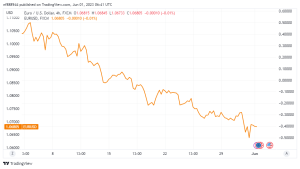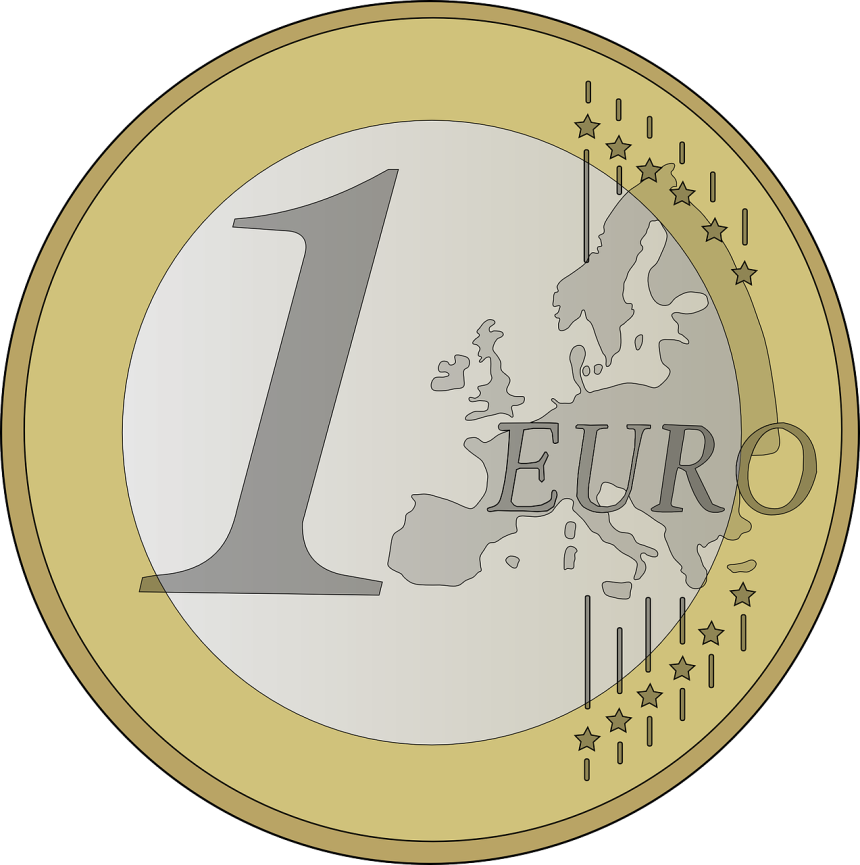In the early European session, the EURUSD is stabilizing in a narrow range below the round-level resistance of 1.0700. The main currency pair is likely to perform well ahead of the publication of Eurozone Inflation and US Employment statistics.
S&P500 futures have gained ground in Asia as investors’ risk-taking capacity has improved. Market traders dropped US shares on Wednesday. Owing to heightened anticipation of another interest rate rise by the Federal Reserve (Fed).
The US Dollar Index (DXY) is gaining momentum in order to break over the immediate barrier of 104.30. As the risk-aversion theme supported by investors improves its attractiveness. The USD Index is regaining ground following a sell-off as the setting after receiving approval from Congress. The US debt-ceiling bill is disappearing. The USD Index’s rebound has impacted demand for US government bonds. As a result, 10-year US Treasury rates have risen to roughly 3.67%.
The spotlight remains on US economic figures.
Following the announcement of excellent US employment market statistics. Investors are keeping a watch on US Employment. Which will present a healthy labor market environment. Investors will wait for the Automatic Data Processing (ADP) Employment Change (May) report before the publication of US Nonfarm Payrolls (NFP). The street expects a new addition of 170K workers in the labor market. Which is smaller than the previous increase of 296K in April.
The analysis of labor market data is critical for the Federal Reserve before establishing an interest rate policy position. It is widely believed that positive labor additions, together with robust Job Openings, will strengthen the argument for the Federal Reserve to tighten policy further.
In addition to the US ADP Employment Change, the ISM Manufacturing PMI (May) will be closely watched. According to the preliminary estimate. The Manufacturing PMI is predicted to fall slightly to 47.0 from 47.1 in the previous publication. A score less than 50.0 indicates a decrease in industrial operations. And the May month contraction might be the US economy’s sixth straight contraction.
While the New Orders Index. Which signals prospective demand, is predicted to fall to 44.9 from 45.7 in the previous edition. This might put a lot of strain on The US dollar.
Policymakers at the Federal Reserve have conflicting opinions on interest rate guidance.
Given that US consumer spending remained resilient in April. Labor market conditions remained strong. And April inflation figures remained stubborn. The Federal Reserve may continue to tighten policy to maintain its full strength in the battle against sticky inflation. However, officials at the Federal Reserve are divided on interest rate guidance. Which is causing havoc in financial markets.
Loretta Mester, President of the Cleveland Federal Reserve Bank, stated in an interview with the Financial Times, “I don’t really see a compelling reason to pause — meaning wait until you get more evidence to decide what to do.” While Federal Reserve Governor Philip Jefferson stated in a speech on Wednesday that rate hikes are on hold, Hikes at the next Federal Open Market Committee (FOMC) meeting would give the FOMC more time to analyze new data before deciding how much further tightening to implement. He went on to say that a halt does not imply that interest rates have peaked.
The odds of mild Eurozone inflation data increasing.
The publication of preliminary Harmonized Index of Consumer costs (HICP) data for Germany, Spain, and France this week indicated that inflationary pressures eased more than expected in May, owing to reduced energy costs and sluggish retail demand. Monthly headline inflation numbers from Spain and Germany have shown deflation, reducing the probability of long-term hawkish European Central Bank (ECB) bets. A general reduction in inflation rates in Germany, Spain, and France suggests that Eurozone inflation will also fall considerably.
However, the European Central BankOn Wednesday, bank policymaker Madis Muller stated, “It is very likely that the central bank will hike by 25 basis points more than once as core inflation remains stubborn.” Furthermore, during the most recent monetary policy meeting, European Central Bank President Christine Lagarde suggested that more than one interest rate rise is warranted.
Technical analysis of the EURUSD
On a four-hour period, EURUSD is predicted to retrace the complete Fibonacci tool placement displayed from the March 15 low at 1.0516 to the April 26 high at 1.1095.

The main currency pair is currently bidding in the Falling Channel chart pattern, with each retreat regarded as a selling opportunity.
The EURUSD Relative Strength Index (RSI) (14) is trying to break out of its bearish range of 20.00-40.00. highlighting US Dollar bulls’ strength









